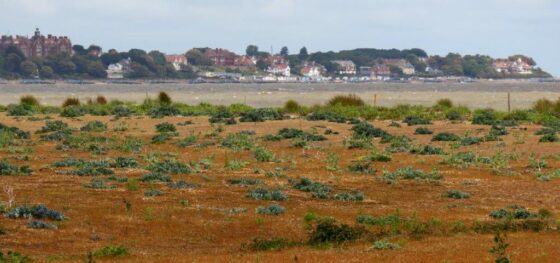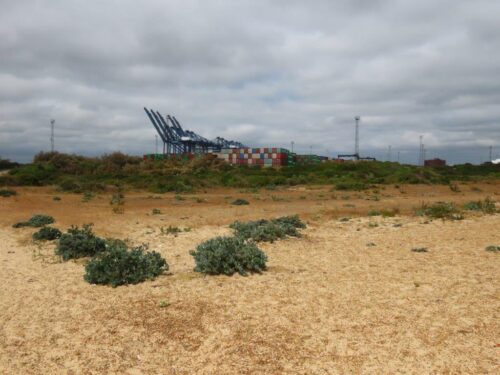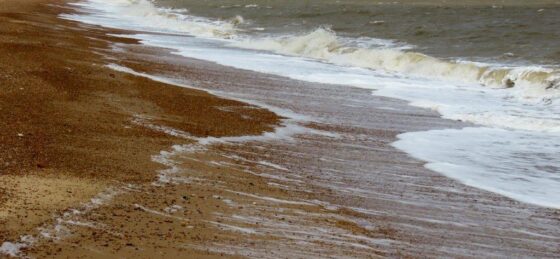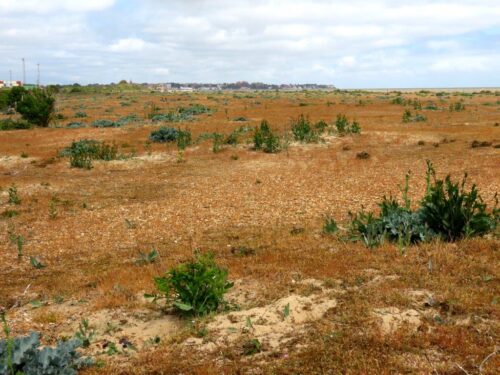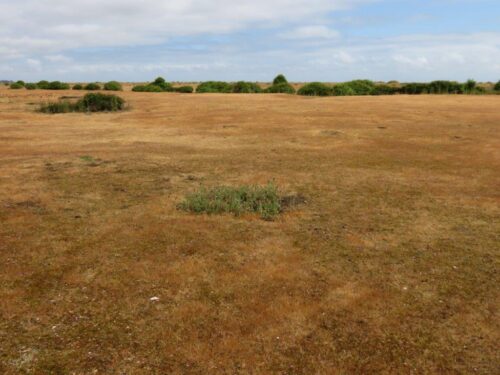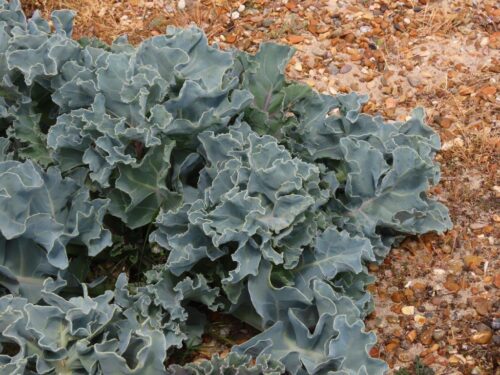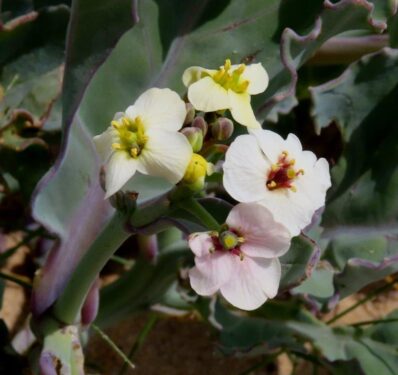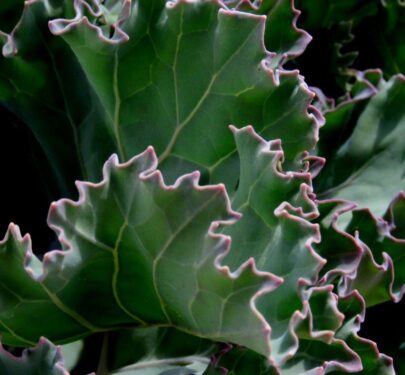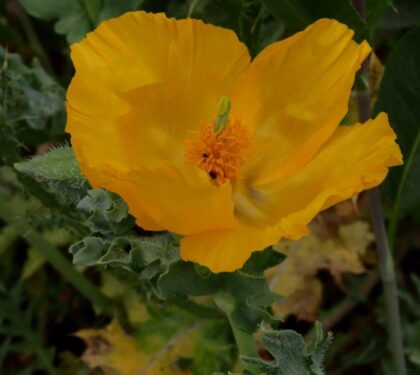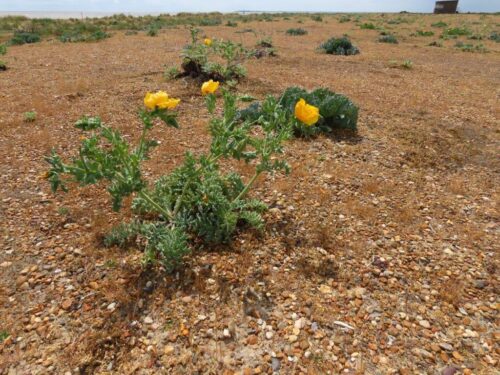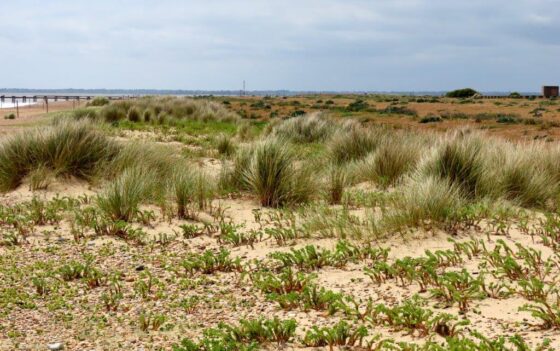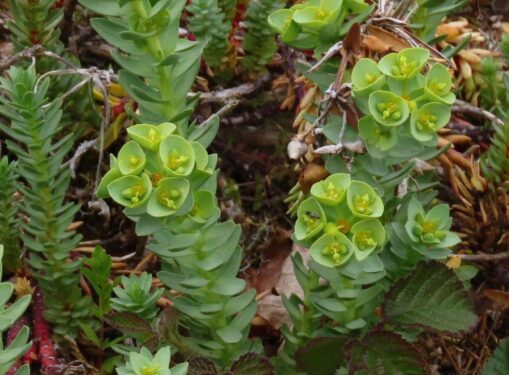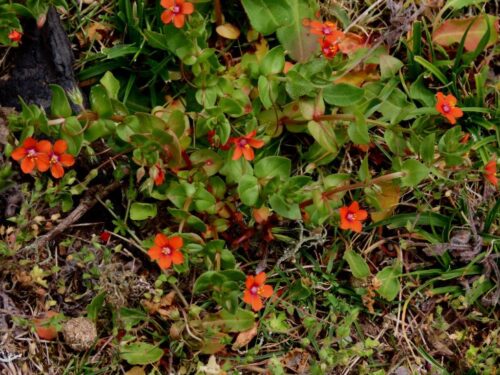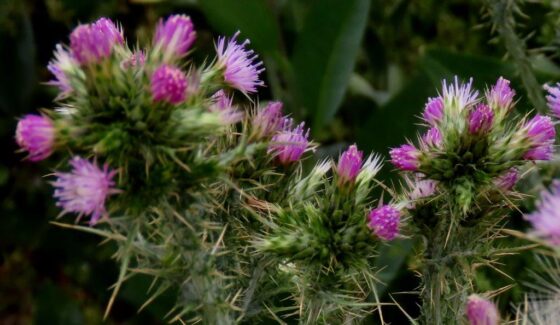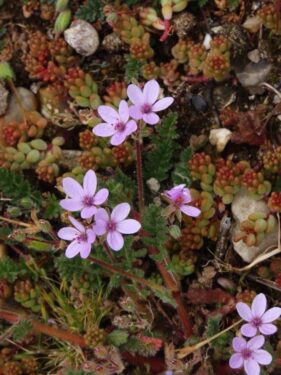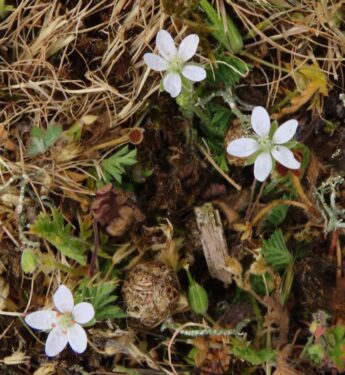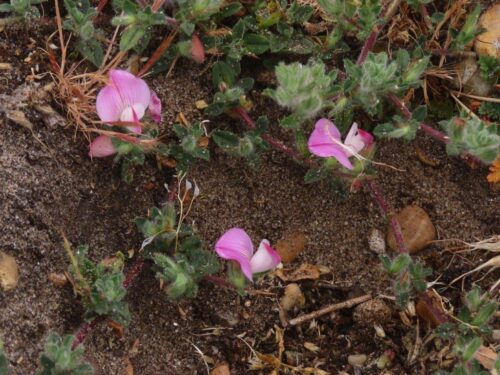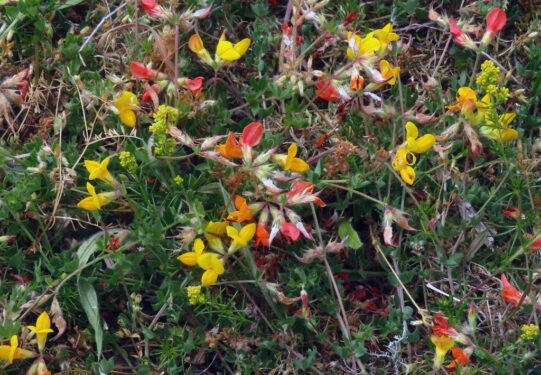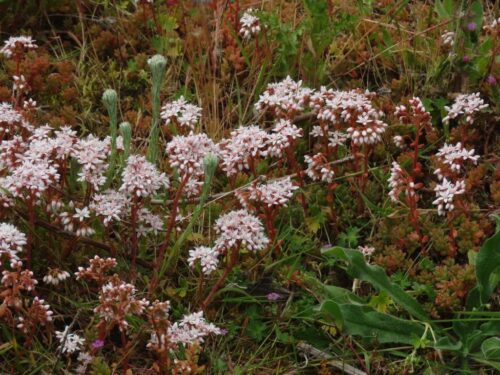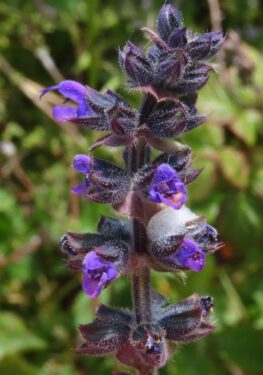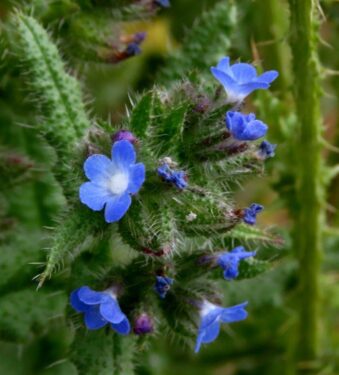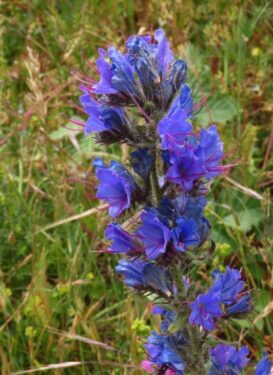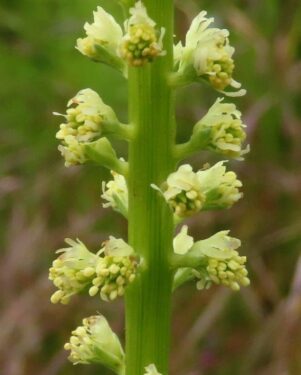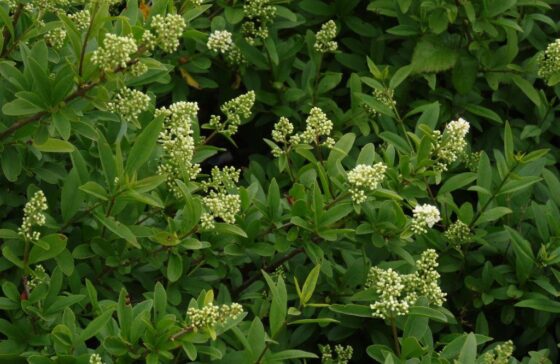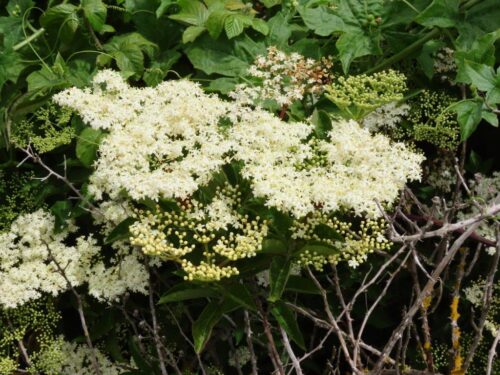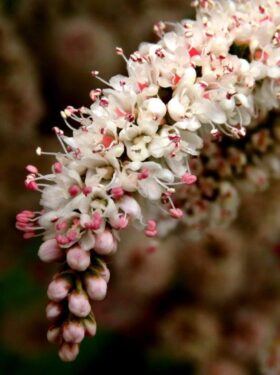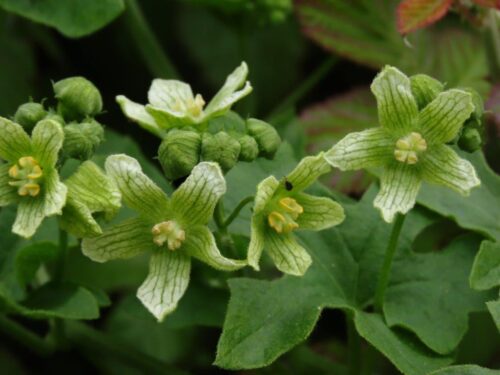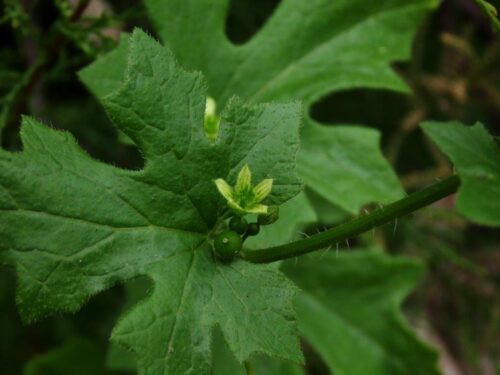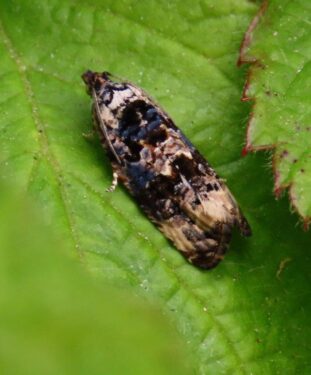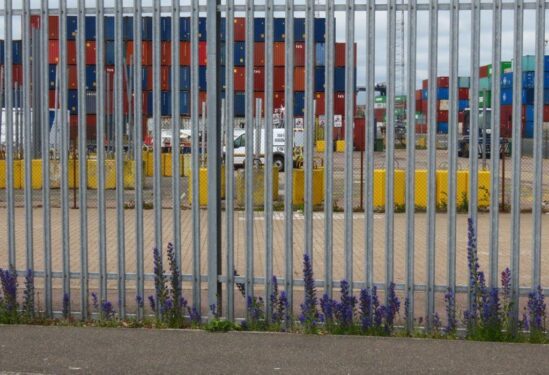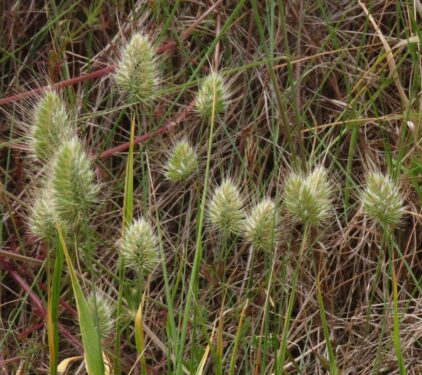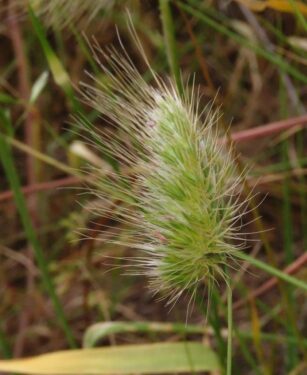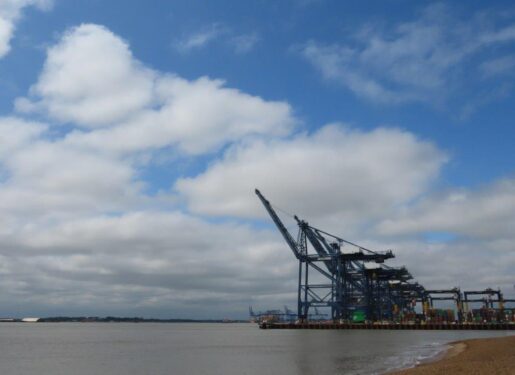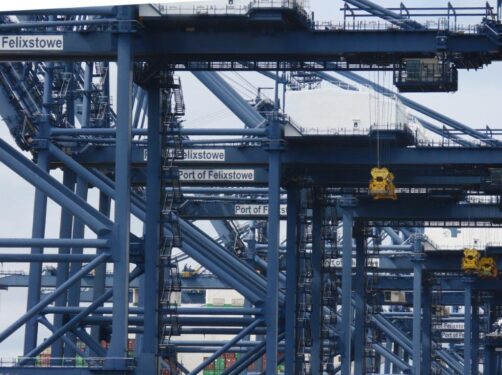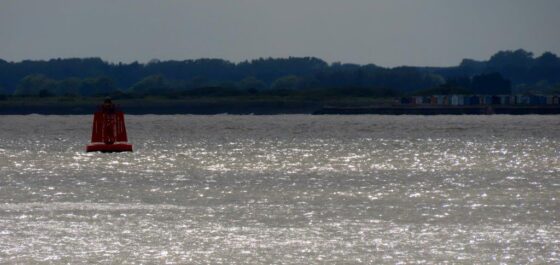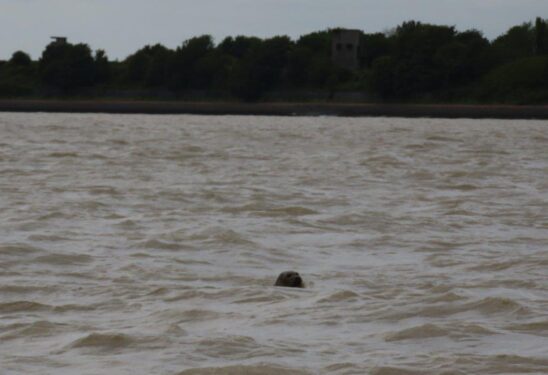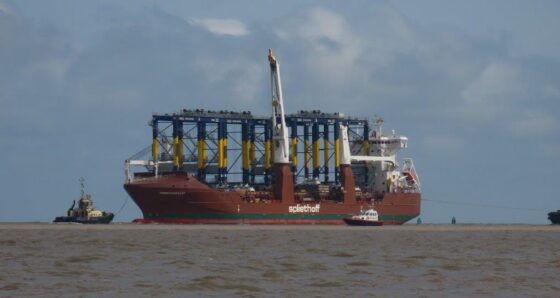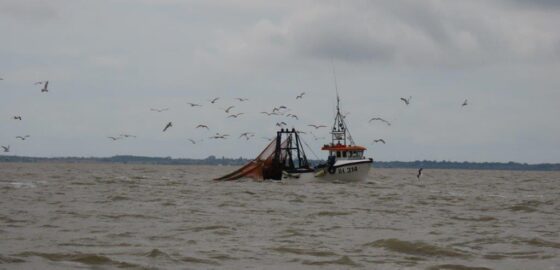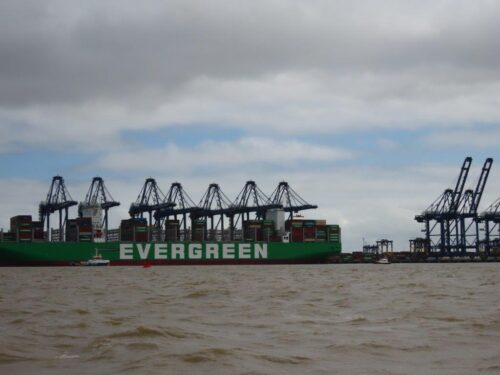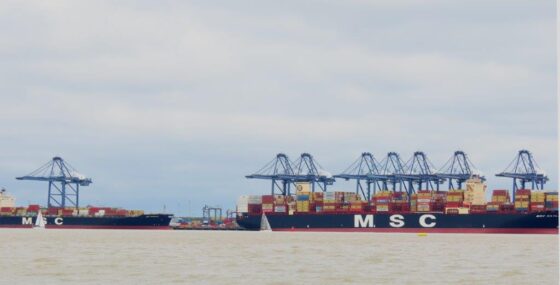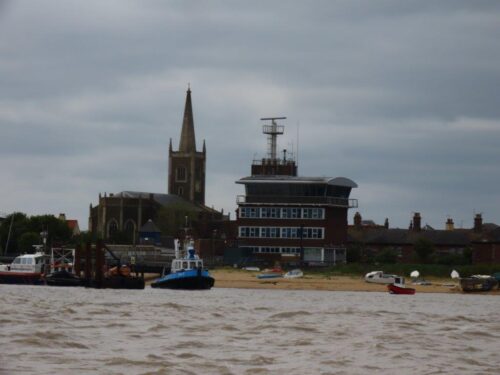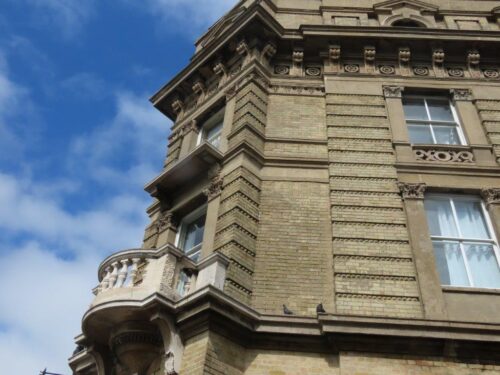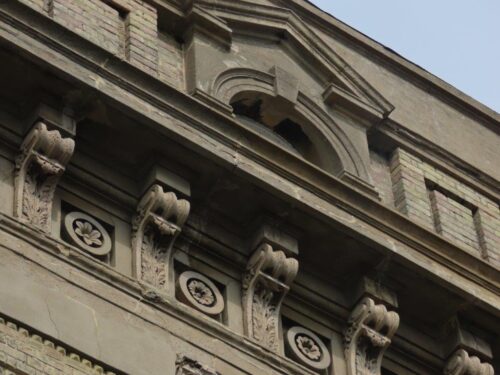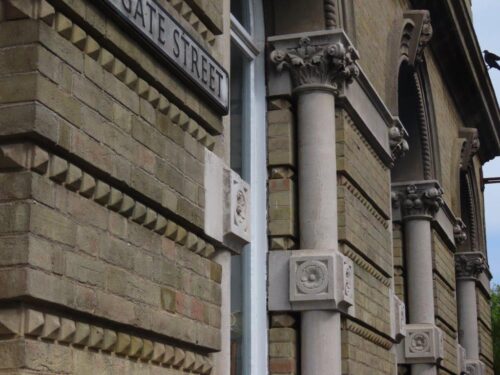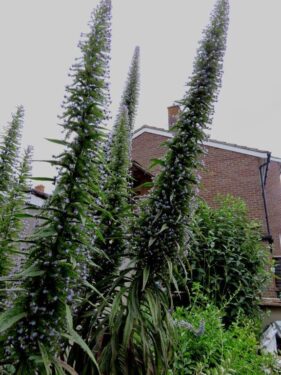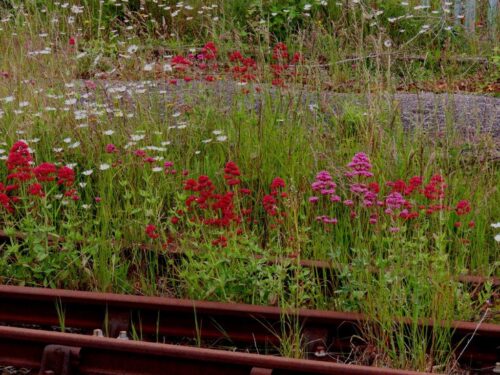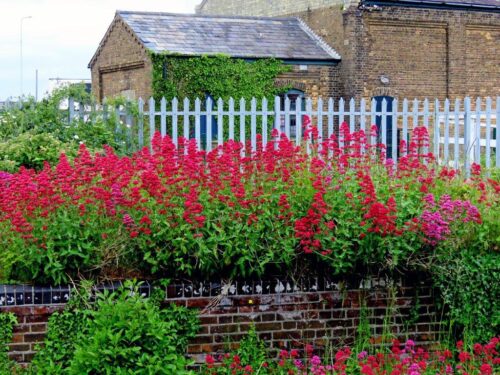By way of an exploration for a possible #WildEssex trip next summer, we headed over the mouth of Harwich Harbour on the regular foot-ferry to Felixstowe.
Arriving near Landguard Fort, it was a short walk out onto the Point and Common, the southernmost section of the Suffolk shingle coastline, on the receiving end of gravel eroded from cliffs and offshore Ice Age deposits right up into north-east Norfolk.
While, after a month-long period without rain, much of the Common was brown and droughted, grazed right down by Rabbits, the true shingle flora like Sea Kale and Yellow Horned-poppy so well adapted to the environmental stresses of drought, sun, wind and ground instability, remains green and is coming into flower.
As always, different plants in different places: where the shingle is more sandy, this is picked out by Marram and Sea Spurge being the dominant species.
Moving landwards, the vegetation diversifies, with annuals such as Scarlet Pimpernel, Slender Thistle and Common Stork’s-bill (both pink and white forms) …
… and grassland perennials such Rest-harrow, Bird’s-foot Trefoil, Wild Clary and White Stonecrop – while none of these is obligately coastal, the whole community is indicative of proximity to the sea.
And then there are the plants that are more familiar to us perhaps as being characteristic of sandy agricultural field margins: Bugloss, Viper’s-bugloss and Weld.
In a few patches scrub has grown up, mainly of Wild Privet, Elder and Tamarisk, festooned in White Bryony (both male and female), which provides shelter for breeding Linnets and the few invertebrates we saw on our breezy day, including Endothenia gentianeana.
So close to the docks, there are many opportunities for interesting plants not native in Britain to arrive and get a foothold. The Rough Dog’s-tail grass is one obvious example, a plant I have seen in this country only a handful of times, mostly down by the Thames Estuary.
The port also of course provides ample opportunities to watch the world come and go. The infrastructure is impressive in its own right, even given the fact that much of that which is imported is unnecessary plastic tat from the Far East. A cathedral to commerce, as impressive in its way as a religious cathedral can be to a non-believer…
Crossing the harbour on the ferry simply adds to the opportunity, to watch the ever-changing seascapes, shipping and wildlife (here a Harbour Seal), and to see familiar landmarks from a different perspective.
And both starting and finishing from Harwich Rail Station, time to explore the historic architecture, the gardens exploding with Giant Viper’s-bugloss and the railway sidings ablaze with Red Valerian and Oxeye Daisy.
A good day out (with an all-day breakfast in the View Point Cafe and fine pint in The Alma) – we are very likely to be back!
